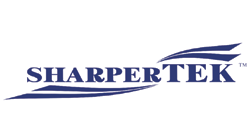How to Clean Surfaces Prior to Anodizing Aluminum
Anodizing aluminum provides increased wear and corrosion resistance and can add decorative color. Literature on the process stresses the importance of clean surfaces before aluminum anodizing takes place. That’s because clean, residue-free surfaces are critical to achieve blemish-free coatings. Incorporating an ultrasonic cleaner in the production line is an ideal method to remove surface contamination such as metal fines and lubricants that may be deposited when manufacturing the parts.
Selection Criteria for Cleaning Aluminum
Ultrasonic cleaners such as the Elma line offered by iultrasonic are available in a variety of cleaning solution capacities. In addition to cleaning tank size, an important consideration is the proper ultrasonic frequency to use. Low frequencies such as 25 kHz produce relatively large cavitation bubbles that, when imploding, create a more vigorous cleaning action than higher frequencies such as 37, 80 or 130 kHz. Higher frequency cavitation bubbles are also better suited for parts with highly polished or complex surfaces.
Examples of benchtop 37 kHz ultrasonic cleaners include the Elmasonic S series available in 13 cleaning solution capacities up to 28 gallons. Industrial-sized units are exemplified by dual-frequency 25/45 kHz X-tra basic units with capacities from 6 to 66 gallons. A good choice for developing pre-anodizing cleaning parameters is the 37/80 kHz Elmasonic PH series with adjustable power. It can be set to automatically switch frequencies at 30-second intervals.
In addition to operating frequencies equipment selection criteria should include a continuous a sweep mode that provides even distribution of sonic energy throughout the bath. This avoids “hot spots” of intense energy that can damage highly polished surfaces and “dead zones” with little or no cavitation. A degas function shortens the time to remove trapped air in freshly prepared solutions. Timers let operators set the cleaning duration allowing them to attend to other matters. Recommended cleaning solution temperatures can also be set on most ultrasonic cleaners.
Which leads us to the cleaning solution itself. In this case it is important that the solution used prior to anodizing should be one that rinses residue-free. Ask us about Elma’s elma clean 260 d&s neutral foam-inhibited concentrate. It removes aqueous cooling emulsions deposited during mechanical treatments, greases and oils, fingerprints and dust from aluminum and light metal alloys (but test for magnesium alloys before use). Recommended dilution is approximately 2% by volume in water.

Surface preparation is essential for quality anodizing
The Pre-Anodizing Cleaning Cycle
With experience you will develop your routine for pre-anodizing cleaning. While instructions are contained in the cleaner’s operations manual the basic steps are:
- Preparing the cleaning solution. Add water to the ultrasonic cleaner tank and the correct amount of cleaning solution concentrate. Turn on the ultrasound and degassing mode (if so equipped) to mix and degas the solution.
- Position parts in the cleaning basket and immerse them in the solution. Large parts may be suspended in the solution but keep them away from the tank sides and bottom.
- At the end of the cycle remove and rinse the parts. A DI or distilled water rinse will help avoid water spotting.
- Allow parts to dry before proceeding with anodizing.
Contact the iUltrasonic cleaning experts to discuss equipment, cleaning chemistries and processes to meet your requirements.







